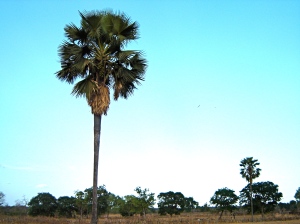After a long hiatus, I want to restart this blog. The absence of posts speaks to a part of research (one among many) that I find very challenging: Writing about it while you’re doing it. In part, my hesitation is a cautious approach. Many social researchers who have been in the business a long time complain about today’s research blogs and rapid-fire publications: They can amount to a lot of hot air blown around without much evidence to support it. And to an extent I agree. Over the last three months I’ve started to appreciate how much time it takes to understand a place at all, and to sift through the details that ethnography provides.
But fieldworkers (like those reviewed in my last, ancient post) also point out the importance of writing in the midst of your observations. Writing is a way of thinking. Often I don’t know what I have to say about something until I start writing about it. Halfway down the second page of my word document, I suddenly find the point I’ve been groping for. And writing for an audience (even an imagined internet audience) forces you to craft thoughts that are more coherent and of greater importance than the often personal details that fill my fieldnotes. That, in fact, was my original motivation for writing a research blog.
Writing while researching was also the reason I returned to the U.S. for two weeks in April to attend the annual meeting of the Association of American Geographers in Washington, D.C. I signed up to present a paper on climate change and adaptation with some fellow students. Our idea was to compare the areas in which we work (India, Senegal, and Tanzania) to demonstrate the importance of history in understanding what climate changes – and other kinds of shocks – mean for rural people. The conference gave me a deadline which, like writing, does wonders for figuring out what you have to say.
In February and March I twice visited Medina, a village where I also spent several months in 2005. In 2005 I focused on learning about the unfolding of several community-based conservation projects in the village. Now, however, my concern with history led me to interview people of diverse occupations – cotton farmers, tenants on a banana plantation, fishermen, vegetable gardeners, etc. – and to ask an array of questions that seemed dizzyingly broad (at least at first). Where do different people farm and how did they come to farm there? How do farmers split their time between irrigating bananas on the plantation and growing their own crops in upland plots? How did the expansion of Senegal’s largest national park in the early 1970’s affect their activities? What emerged from these questions is a story about how some households have been able to buffer themselves against risks by combining plantation work with upland farming. But the story remains incomplete, and I will soon be returning to Medina to follow up.
In the meantime, I have been reconsidering my focus on climate change – so much for the title of this blog! – but more on that later. I have also been rethinking how I work. The Senegalese scholars I contacted before arriving have much bigger projects taking up their time. In other words, I find myself facing the puzzles and hurdles of fieldwork on my own. And one of my major goals in returning to Senegal was to try to work as part of a team. That’s how I do my best work. As importantly, though, it’s also a way to contribute to ongoing efforts here in Senegal. Otherwise knowledge returns home with the foreign researcher, to contribute to her/his career and, unfortunately often, to little else. What else am I bringing to the people who so graciously give me their time, put up with my strange questions, and give me a roof under which to sleep?
I am reconsidering what my research can offer to an organization based in Senegal. That question, too, will need to be addressed in a future post. So there’s more writing to do on this blog!

 thoughts as this blog progresses by commenting on entries or by contacting me through the link above.
thoughts as this blog progresses by commenting on entries or by contacting me through the link above.